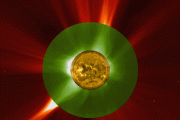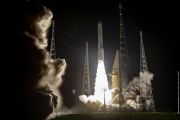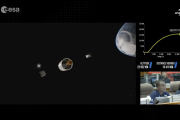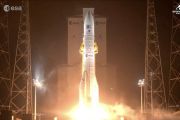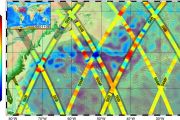
Copernical Team
Identification of noise sources during launch using phased array microphone systems
 Every part of a launch vehicle, launch pad, and ground operation equipment is subjected to the high acoustic load generated during lift-off. Therefore, many extreme measures are taken to try to suppress this acoustic environment by damping with a water deluge system and diverting engine plumes away from the vehicle via flame trenches. Even single decibel reductions of the acoustic levels can tra
Every part of a launch vehicle, launch pad, and ground operation equipment is subjected to the high acoustic load generated during lift-off. Therefore, many extreme measures are taken to try to suppress this acoustic environment by damping with a water deluge system and diverting engine plumes away from the vehicle via flame trenches. Even single decibel reductions of the acoustic levels can tra Free-Flying Robots in Space: How Real-Life Droids Test New Tech
 Navigating the great unknown of space requires innovative tools, like the Multi-Resolution Scanner (MRS), a novel 3D mapping technology developed under the auspices of the International Space Station (ISS) National Laboratory. This technology leverages NASA's robotic Astrobee system to generate high-resolution maps of remote environments, aiding not only space exploration but also terrestrial in
Navigating the great unknown of space requires innovative tools, like the Multi-Resolution Scanner (MRS), a novel 3D mapping technology developed under the auspices of the International Space Station (ISS) National Laboratory. This technology leverages NASA's robotic Astrobee system to generate high-resolution maps of remote environments, aiding not only space exploration but also terrestrial in Ariane 6 prepares for inaugural launch from Europe's Spaceport
 On April 24, automated guided vehicles moved the Ariane 6 central core, which includes the main and upper stages, at a speed of 3 km/h from the launcher assembly building to the launch pad 800 meters away.
The central core's placement on the launch pad involved coordinated actions using two AGVs and a crane equipped with a lifting beam. This allowed for the upright positioning of the centr
On April 24, automated guided vehicles moved the Ariane 6 central core, which includes the main and upper stages, at a speed of 3 km/h from the launcher assembly building to the launch pad 800 meters away.
The central core's placement on the launch pad involved coordinated actions using two AGVs and a crane equipped with a lifting beam. This allowed for the upright positioning of the centr Einstein Probe opens its wide eyes to the X-ray sky
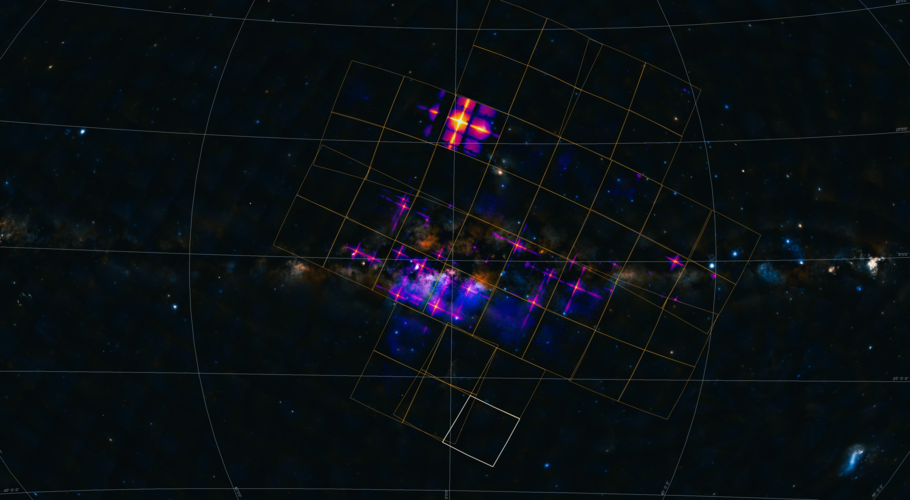
The first images captured by the innovative mission were presented at the 7th workshop of the Einstein Probe consortium in Beijing. They illustrate the satellite’s full potential and show that its novel optics, which mimic a lobster’s eyes, are ready to monitor the X-ray sky. The space X-ray telescope zoomed in on a few well-known celestial objects to give us a hint of what the mission is capable of.
China outlines objectives for Shenzhou XVIII space mission
 China's Shenzhou-18 mission, set for a six-month duration at the national space station, will include a series of in-orbit scientific tests and applications, alongside multiple spacewalks, as detailed by a senior China Manned Space Agency (CMSA) official during a recent press briefing.
The Shenzhou XVIII spacecraft is poised for launch at 8:59 pm Thursday (Beijing Time) from the Jiuquan Sa
China's Shenzhou-18 mission, set for a six-month duration at the national space station, will include a series of in-orbit scientific tests and applications, alongside multiple spacewalks, as detailed by a senior China Manned Space Agency (CMSA) official during a recent press briefing.
The Shenzhou XVIII spacecraft is poised for launch at 8:59 pm Thursday (Beijing Time) from the Jiuquan Sa Satellogic partners with O.N.E. Amazon to develop the Internet of Forests
 Satellogic Inc. (NASDAQ: SATL), known for its high-resolution Earth Observation (EO) capabilities, has announced a partnership with O.N.E. Amazon aimed at environmental and investment sustainability through innovative conservation technologies. The collaboration, revealed on Earth Day, highlights the role of advanced geospatial sciences in environmental health
Satellogic Inc. (NASDAQ: SATL), known for its high-resolution Earth Observation (EO) capabilities, has announced a partnership with O.N.E. Amazon aimed at environmental and investment sustainability through innovative conservation technologies. The collaboration, revealed on Earth Day, highlights the role of advanced geospatial sciences in environmental health Mapping plant traits from space: HKU team integrates field and satellite data for ecosystem analysis
 A promising development in ecosystem monitoring has been achieved by Professor Jin Wu and his team at the University of Hong Kong's School of Biological Sciences. Their study, detailed in Remote Sensing of Environment, involves using the Sentinel-2 satellite to map plant functional traits through time-series satellite data. This method offers new insights into the functional diversity and health
A promising development in ecosystem monitoring has been achieved by Professor Jin Wu and his team at the University of Hong Kong's School of Biological Sciences. Their study, detailed in Remote Sensing of Environment, involves using the Sentinel-2 satellite to map plant functional traits through time-series satellite data. This method offers new insights into the functional diversity and health Lynred secures contract for Sentinel-2 NG mission's advanced infrared detector
 Lynred, recognized globally for its high-quality infrared detectors for aerospace, defense, and commercial use, has been selected through an open bidding process to develop a new multispectral infrared detector for the Sentinel-2 Next-Generation (NG) land monitoring satellite mission. This mission is a continuation of the existing Sentinel-2, spearheaded by the European Space Agency (ESA) under
Lynred, recognized globally for its high-quality infrared detectors for aerospace, defense, and commercial use, has been selected through an open bidding process to develop a new multispectral infrared detector for the Sentinel-2 Next-Generation (NG) land monitoring satellite mission. This mission is a continuation of the existing Sentinel-2, spearheaded by the European Space Agency (ESA) under NASA's Optical Comms Demo Achieves Data Transmission Over 140 Million Miles
 NASA's Deep Space Optical Communications (DSOC) technology aboard the Psyche spacecraft has successfully transmitted engineering data from beyond 140 million miles away, showcasing its capacity for future space communication. The technology, although not essential for Psyche's data transmission needs, interfaced effectively with the spacecraft's existing radio frequency transmitter.
The tr
NASA's Deep Space Optical Communications (DSOC) technology aboard the Psyche spacecraft has successfully transmitted engineering data from beyond 140 million miles away, showcasing its capacity for future space communication. The technology, although not essential for Psyche's data transmission needs, interfaced effectively with the spacecraft's existing radio frequency transmitter.
The tr 














